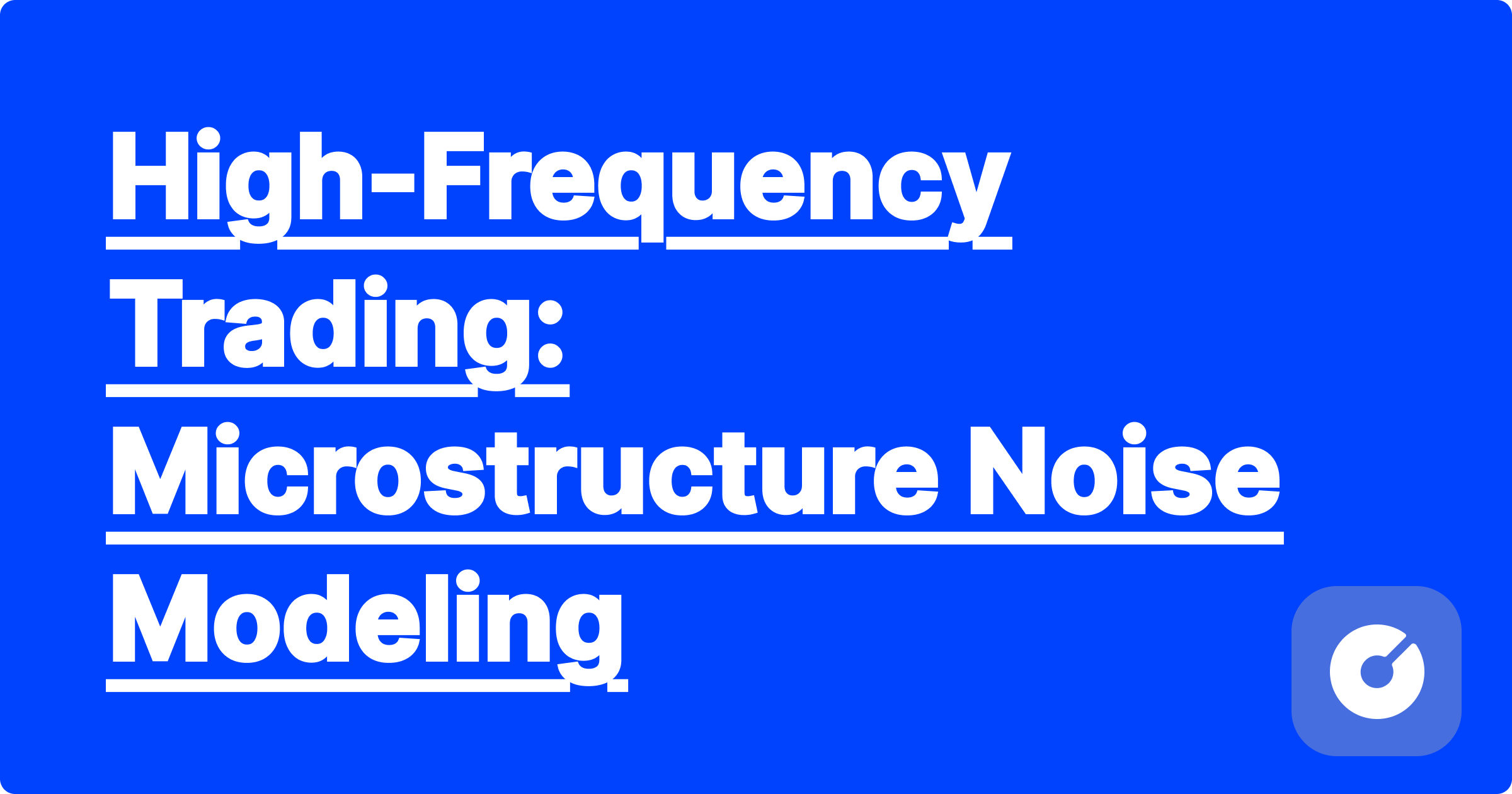
``html
High-Frequency Trading: Microstructure Noise Modeling
.equation {
font-family: "Times New Roman", serif;
text-align: center;
margin: 1em 0;
}
.tip {
background-color: #f0f0f0;
border: 1px solid #ddd;
padding: 10px;
margin-bottom: 10px;
}
.warning {
background-color: #ffdddd;
border: 1px solid #ffaaaa;
padding: 10px;
margin-bottom: 10px;
}
pre {
background-color: #f4f4f4;
padding: 10px;
border-radius: 5px;
overflow-x: auto;
}
hljs.initHighlightingOnLoad();
This blog post delves into the advanced techniques of microstructure noise modeling in high-frequency trading (HFT). We'll explore cutting-edge research, practical implementations, and potential future directions, aiming to equip readers with the knowledge to immediately apply these concepts in their research or projects.
Microstructure noise represents the deviation of observed prices from their true, efficient prices. It arises from various factors including: bid-ask bounce, order book dynamics, hidden liquidity, and the discreteness of price levels. Ignoring this noise leads to inaccurate estimations of volatility and asset price dynamics, severely impacting the effectiveness of HFT strategies.
Traditional models, like the simple additive noise model, are insufficient to capture the complex nature of microstructure noise. Recent research explores more sophisticated approaches:
Let's consider a simplified SV-MN model:
\(d\log(P_t) = \mu dt + \sigma_t dW_t + \epsilon_t\)
\(d\sigma_t^2 = \kappa (\theta - \sigma_t^2) dt + \xi \sigma_t dZ_t\)
Where \(P_t\) is the observed price, \(\mu\) is the drift, \(\sigma_t\) is the stochastic volatility, \(W_t\) and \(Z_t\) are Wiener processes, \(\epsilon_t\) represents microstructure noise, and \(\kappa\), \(\theta\), \(\xi\) are parameters.
We can estimate the parameters using Bayesian methods with MCMC techniques like Hamiltonian Monte Carlo (HMC). Below is a simplified pseudocode (using Python with PyMC):
import pymc as pm
import numpy as np
#Observed prices
prices = np.array(...)
with pm.Model() as model:
# Priors for parameters (adjust as needed based on prior knowledge)
mu = pm.Normal("mu", mu=0, sigma=1)
kappa = pm.HalfNormal("kappa", sigma=1)
theta = pm.HalfNormal("theta", sigma=1)
xi = pm.HalfNormal("xi", sigma=1)
sigma_0 = pm.HalfNormal("sigma_0", sigma=1)
epsilon_sigma = pm.HalfNormal("epsilon_sigma", sigma=1)
# Latent volatility process
sigma = pm.GaussianRandomWalk("sigma", sigma=epsilon_sigma, shape=len(prices))
# Likelihood
log_prices = pm.Deterministic("log_prices", np.log(prices))
price_likelihood = pm.Normal("price_likelihood", mu=log_prices[:-1] + mu + sigma, sigma=0.1)
# Inference
trace = pm.sample(1000, tune=1000)
#Post-processing and analysis of the trace
Remember to carefully select priors based on your prior knowledge and adjust the model based on the specific characteristics of the asset.
The computational cost of Bayesian methods can be high, especially for large datasets. The choice of MCMC algorithm and the efficiency of the sampler significantly affect the runtime. Comparing the performance of different samplers (e.g., HMC, NUTS) is crucial. We might need to explore techniques like parallelization and subsampling to manage the computational burden. [cite relevant papers comparing different methods].
Accurate microstructure noise modeling is critical for:
Current research focuses on:
It's crucial to consider the ethical implications of advanced HFT strategies and their potential impact on market stability and fairness.
Microstructure noise modeling remains a vibrant research area, crucial for developing sophisticated HFT strategies. By understanding the nuances of advanced models, implementing efficient algorithms, and considering the ethical implications, researchers and practitioners can unlock significant opportunities in this rapidly evolving field. This blog post provides a stepping stone; further exploration of cited papers and open-source tools will be essential for deeper understanding and practical application.
`
`html
``
Second Career Medical Students: Changing Paths to a Rewarding Career
Foreign Medical Schools for US Students: A Comprehensive Guide for 2024 and Beyond
Osteopathic Medicine: Growing Acceptance and Benefits for Aspiring Physicians
Joint Degree Programs: MD/MBA, MD/JD, MD/MPH – Your Path to a Multifaceted Career in Medicine
GPAI Biology Guide DNA Analysis to Ecosystem Modeling | GPAI - AI-ce Every Class
GPAI Biology Guide DNA Analysis to Ecosystem Modeling | GPAI - AI-ce Every Class
Acoustical Engineering Noise Control Design - Complete Engineering Guide
Simulation Modeling Arena System Analysis - Complete Engineering Guide
AI-Enhanced Mathematical Biology: Population Dynamics and Disease Modeling
Machine Learning for Computational Neuroscience: Brain Modeling and Analysis